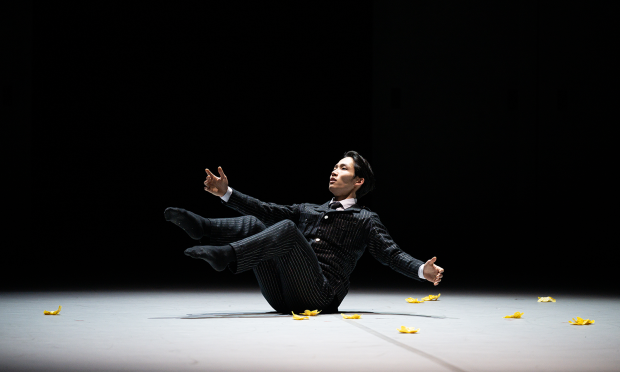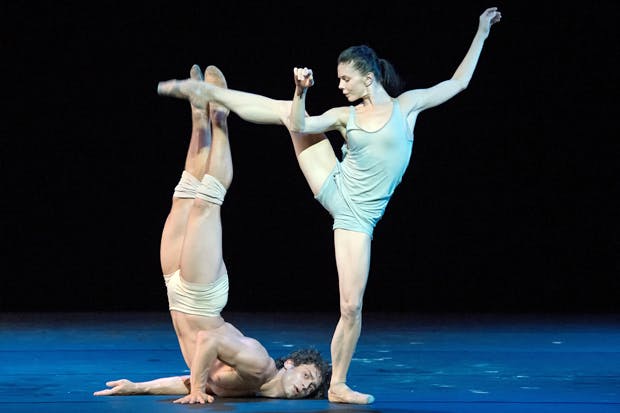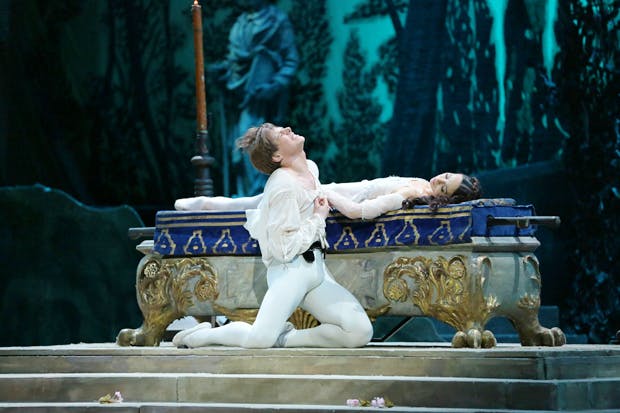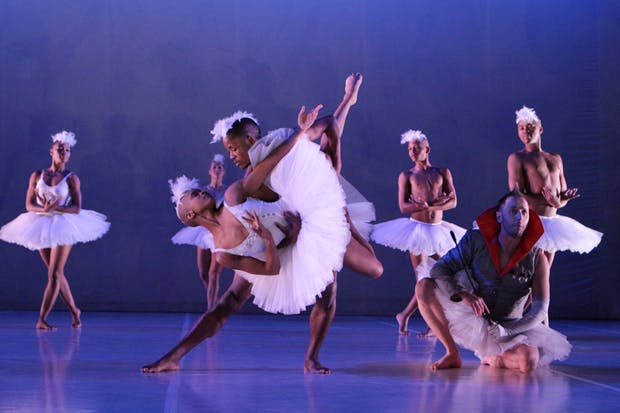It was somewhat weird that Pina Bausch’s Palermo Palermo opened on the same night as Spain’s victory over Italy in the Euro 2012 final. After all, the Sicilian capital was long dominated by the Spaniards. Yet in Bausch’s Tanztheater vision of Palermo there are no references to such history, bar a few Spanish-looking steps set to the Spanish-influenced Sicilian music in part one’s frenzied finale. What one gets instead are more or less explicit flashes of the city’s more contemporary and often grim realities: from the mafia ritual of kissing the boss’s hands, to garbage piling up in streets, via evocations of Sicilian mourning, immigration and emigration.
The evening starts with a collapsing wall, the visual metaphor of all visual metaphors and one of Bausch’s most striking coups de théâtre. In line with her passion for creating challenging performance spaces and surfaces, the debris generates unpredictable and unrepeatable movement patterns, forcing the performers, including a dog, to make impromptu choices on how best to walk, run, climb and balance on the objects.
Other unequivocally Bauschian trademarks punctuate the performance, often overwhelming the more city-specific metaphors mentioned above. Which is fine if you are one of those Bausch novices who flocked to see the company in the wake of Wenders’s trendsetting movie or if you are a Bausch diehard. But it is not so fine for those who have been, theatrically speaking, around the block a few times or have seen more than one performance in the current World Cities 2012 season. Indeed, what transpires from this unique retrospective is that Bausch’s approach to specific geographical realities was somewhat formulaic. Which does not do her justice, for she also created non-formulaic masterworks such as Rite of Spring, Café Müller, 1980, Bluebeard, Kontakthof and Nelken.
Those longing for a dance alternative to Wuppertal Tanztheater’s expressionist angst can go to the Royal Opera House, where the Royal Ballet’s season reaches its end with a rather sumptuous triple bill of old favourites. Frederick Ashton’s slick 1956 Birthday Offering, with its seven very difficult ballerina solos, is every balletomane’s dream. I only wish more attention had been paid to some typical Ashtonian details in this restaging. Delicate though choreographically and theatrically significant touches, such as the coquettish ‘brushing’ back of a tutu, or the way the male principal — Federico Bonelli — ought to initiate the spinning of his partner — Tamara Rojo — by a gentle push of his fingertips on hers, were grossly overlooked and came across as brassy or even grotesque at times. Of the seven female dancers I saw, only Yuhui Choe and Sarah Lamb had the correct interpretative and stylistic qualities required by this pièce d’occasion in one scene — as it was originally called.
Interpretative and stylistic problems also marred Ashton’s A Month in the Country. What originated in 1976 as a splendidly and seamlessly constructed dance drama seems to have become a disjointed series of bravura numbers. And while on the opening night the dancing was passable at times, the ‘silent’ acting of the two principals, Zenaida Yanowsky and Rupert Pennefather, was disappointingly flawed.
To end an evening of delicate dancing and passions with Bronislava Nijinska’s 1923 Les Noces is a bold move, even though Ashton credited Nijinska, with whom he had worked, as one of his masters. The ballet, set to Stravinsky’s haunting score, has not lost any of its provocative modernism, even though this one was not danced to perfection either. I only hope that subsequent and different casts will do more justice to such a potentially wonderful choreographic triptych.
Got something to add? Join the discussion and comment below.
Get 10 issues for just $10
Subscribe to The Spectator Australia today for the next 10 magazine issues, plus full online access, for just $10.













Comments
Don't miss out
Join the conversation with other Spectator Australia readers. Subscribe to leave a comment.
SUBSCRIBEAlready a subscriber? Log in